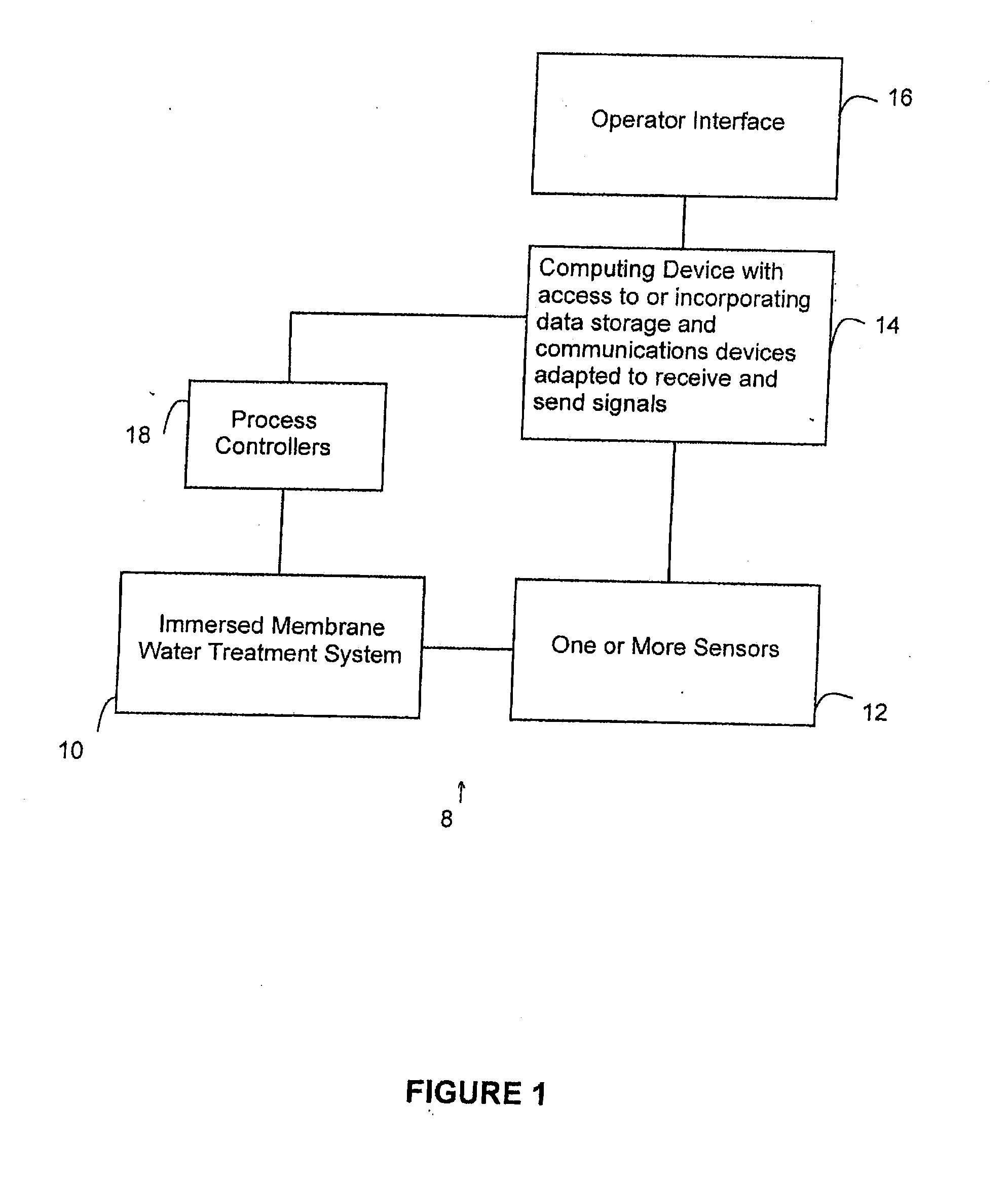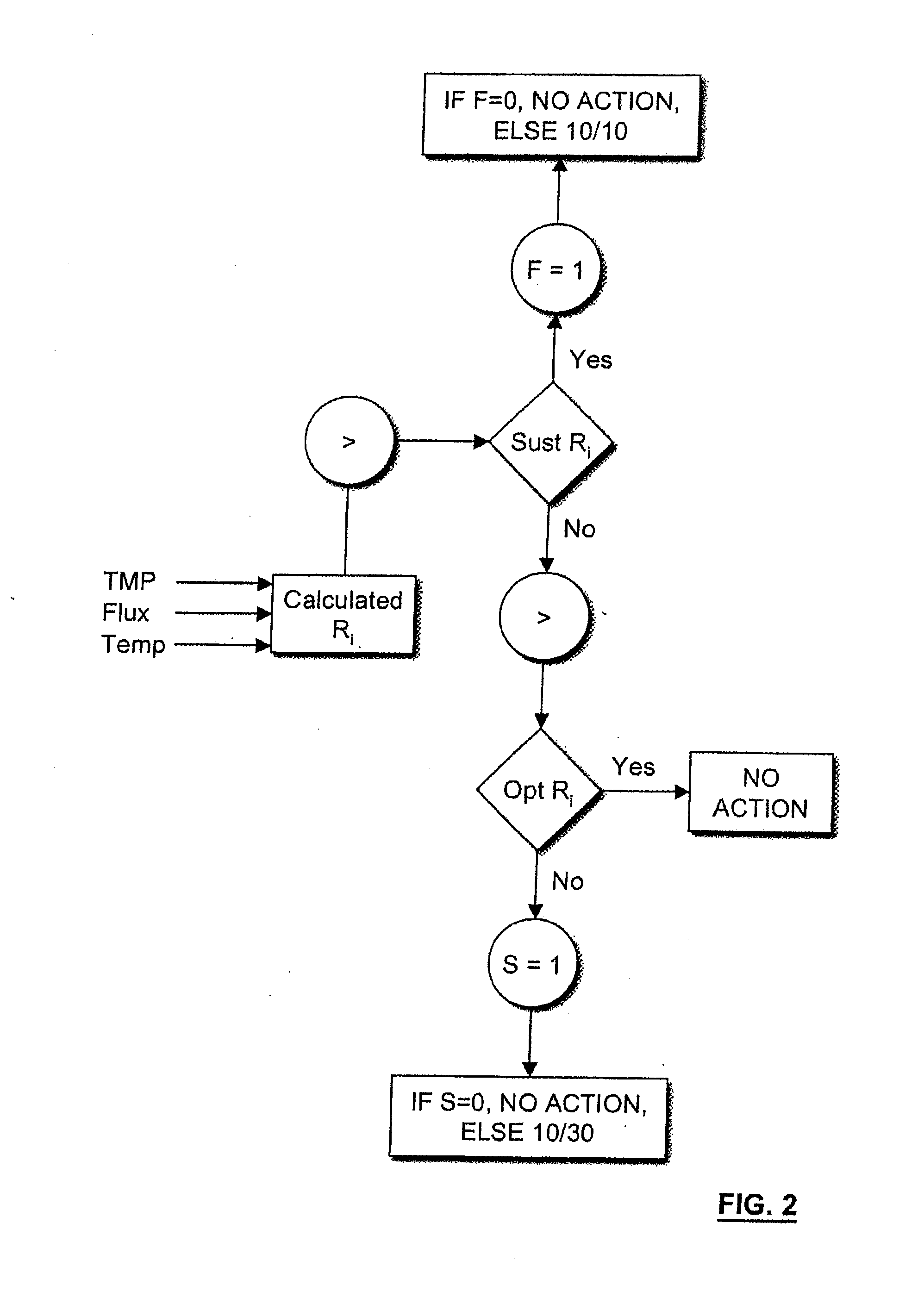Process control for an immersed membrane system
- Summary
- Abstract
- Description
- Claims
- Application Information
AI Technical Summary
Benefits of technology
Problems solved by technology
Method used
Image
Examples
example 1
[0139]In a 2 month test period the application of an on-line MBR process control, based on the results from the resistance in series method was studied. This on-line MBR process control will adjust different operational parameters (e.g. membrane aeration frequency factor, relaxation duration, etc.) to reduce the MBR operational costs or increase membrane fouling removal, as required.
[0140]A ZeeWeed® immersed membrane pilot plant, made by ZENON Environmental Inc, was operated using raw wastewater feed from a municipal water pollution control centre. The raw wastewater was screened through a 0.75 mm screen. The pilots were operated at a hydraulic retention time of 6 hours and a sludge retention time of 15 days.
[0141]At the first set of conditions that lasted 2 days, ZeeWeed® membranes were operated for a 10 minute permeation cycle with a net flux of 14 gallons / (square foot*day) (gfd), a corresponding instantaneous flux of 15.4 gfd and 1 minute relaxation time. The systems were operate...
PUM
 Login to View More
Login to View More Abstract
Description
Claims
Application Information
 Login to View More
Login to View More - R&D
- Intellectual Property
- Life Sciences
- Materials
- Tech Scout
- Unparalleled Data Quality
- Higher Quality Content
- 60% Fewer Hallucinations
Browse by: Latest US Patents, China's latest patents, Technical Efficacy Thesaurus, Application Domain, Technology Topic, Popular Technical Reports.
© 2025 PatSnap. All rights reserved.Legal|Privacy policy|Modern Slavery Act Transparency Statement|Sitemap|About US| Contact US: help@patsnap.com



